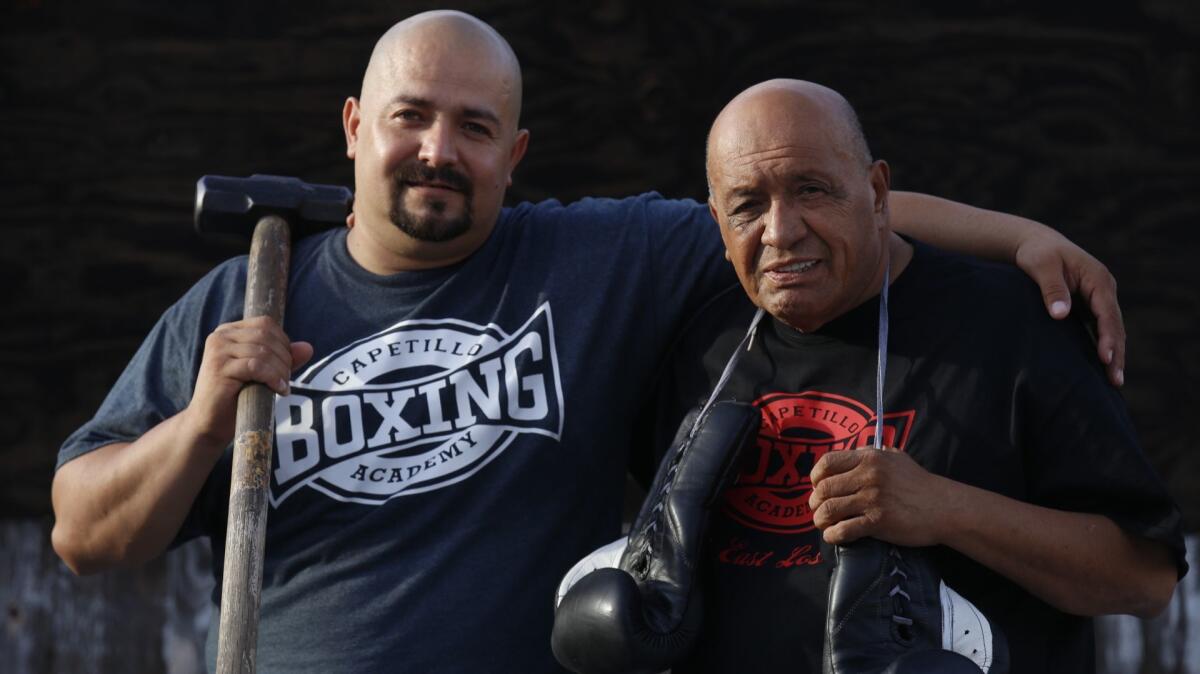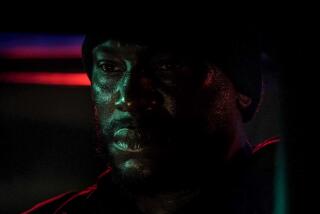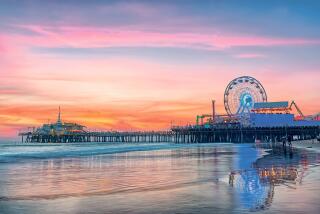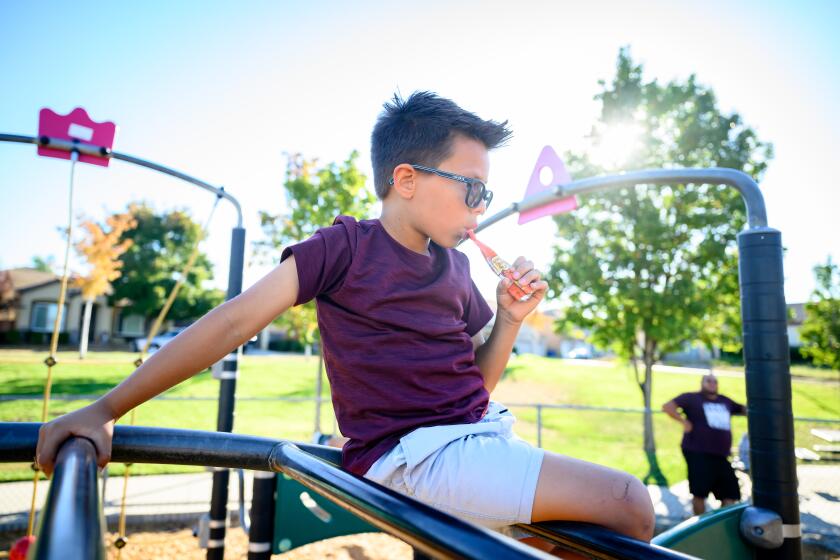More L.A. residents fear a repeat of 1992 riots. Here’s the view from the street

For many residents in L.A. who remember the 1992 riots, the images from those six days of unrest are etched in their memory.
Smoke filled the sky, vandalism and looting were rampant and angry crowds demonstrated on street corners across the city.
In the months and years following, community leaders and lawmakers addressed many of the grievances that sparked the riots, such as race relations and police brutality.
But is another riot of that magnitude in Los Angeles— or anywhere else in the U.S. — possible?
A new poll shows more L.A. residents think new riots are likely.
Alberto Nava
“Police treatment toward minorities has improved”
Nava (above left) was only 13 when the riots broke out, but he’ll never forget the images he saw on TV 25 years ago. “The man [that] was pulled out of his truck and beat up on the corner of Florence and Normandie … that image is imprinted in my mind,” Nava said.
Nava is surprised that another riot hasn’t already happened. He said that despite race relations improving in Los Angeles, another riot is likely to happen in L.A. or somewhere else in the country in a few years because of President Trump’s policies towards immigrants.
“Police treatment toward minorities has improved as well as relations between other races in Los Angeles,” Nava said. “But my friends and I have been noticing tensions building on social issues because of Trump.”
Marco Delgado
“People get emotional quickly”
Marco Delgado (above right) was living in Mexico at the time of the L.A. riots, but remembers learning about their devastating effects on the city through the media. Now, having been here for 18 years, Delgado said another riot is highly likely thanks to technology.
“We are worse now than back then because of social media. People get emotional quickly after seeing things on social media. It can spark a mob mentality,” he said.
Once apathetic to issues of social and economic disparity, his two children, ages 17 and 18, are emotionally and intellectually driven to care about these issues since Trump was elected. Delgado believes they are an example of how the younger generation is becoming increasingly frustrated. “They are more into politics. Before when I watched the news or ‘The Daily Show’ they asked me to change the channel. Now we watch it together and they ask me to record those shows,” he said.
Silvia Lorenzana
“Our government is pushing this”
Lorenzana wasn’t a typical 28-year-old when the L.A. riots broke out. She was living with her parents in East Los Angeles and said they rarely let her go out by herself because her neighborhood was dangerous. She was sheltered and felt safe in the confines of her home.
But the riots changed that. “I felt like it was only a matter of time before violence broke out in my neighborhood,” she recalled. Now an agent at a tax service agency, Lorenzana is concerned that civil unrest is likely to break out in L.A. in the next five years and perhaps in other places across the country.
She’s also worried that as more pressure mounts for illegal immigrants in Los Angeles because of Trump’s policies, they will have difficulty finding jobs and will turn to crime. “Our government is pushing this,” she said. “It’s not just L.A. specific, it’s going to be other parts of the U.S. as well.”
Nicole Cuff
“When nobody pays a price for it … it could set people off.”
For Cuff and her friends, the 1992 Los Angeles riots used to feel like a piece of history, told in old stories by their parents or discussed and analyzed in school.
Recently, though, it’s started to feel much more real to her — like something that could happen again in the near future.
Cuff, a coordinator at an entertainment management company who is half black and half Filipina, said her feelings come in part from several years of headlines, viral videos of police force and Black Lives Matter protests over police shootings of African Americans.
“It evokes some unfelt anger that hasn’t been tapped into,” said Cuff, 26, who says her diverse group of friends has become much more politically engaged in the last few years. “When nobody pays a price for it … it could set people off.”
Javier Capetillo
“After the riots things got better”
Javier Capetillo (above right) understands the reasons that sparked the riots quite intimately. The 66-year-old boxing trainer was living in South Central Los Angeles years before the riots broke out. He recalls racial tensions between Latinos, African Americans and cops reaching a boiling point.
The riots, he said, allowed people to express their frustrations. “People think things through nowadays and there’s less crime. After the riots things got better,” Capetillo said.
He said he doesn’t believe a riot like the one that happened 25 years ago is possible, but joked that with Trump as president, maybe different social issues will arise and pave the path for unrest a few years down the line. “Things are getting better, but now with Trump I don’t know what will happen,” he said, laughing.
Javier Capetillo Jr.
“These are no longer major problems”
Javier Capetillo Jr. (above left) agrees with his father. He was a teenager living with his father in South Central Los Angeles when the riots broke out. Though he regrets taking part in the riots, he said that he and many of friends had grown angry and tired after years of tension with the police in his neighborhood.
“I got beat up in my alley by police. There was corruption. But these are no longer major problems in my old neighborhood,” he said.
If another riot were to break out, Capetillo Jr. suspects it’d be due to a multitude of grievances that millennials have been vocalizing and spearheading change about, such as police shootings of unarmed civilians.
Follow me on Twitter @melissaetehad
More to Read
Sign up for Essential California
The most important California stories and recommendations in your inbox every morning.
You may occasionally receive promotional content from the Los Angeles Times.











